Slender rainbowfish - Melanotaenia gracilis
Scientific name: Melanotaenia gracilis
Common name: Slender rainbowfish
Family: Melanotaeniidae
Usual size in fish tanks: 9 - 10 cm (3.54 - 3.94 inch)
014
Recommended pH range: 6.5 - 7
Recommended water hardness: 10 - 15°N (178.57 - 267.86ppm)
0°C 32°F30°C 86°F
Recommended temperature range: 24 - 28 °C (75.2 - 82.4°F)
The way how these fish reproduce: Spawning
Where the species comes from: Oceania
Temperament to its own species: peaceful
Temperament toward other fish species: peaceful
Usual place in the tank: Middle levels
Food and Feeding
The Slender Rainbowfish (Melanotaenia gracilis) thrives on a diet that includes high-quality algae-based flakes or pellets. To maintain optimal health and coloration, their diet should be supplemented with protein-rich foods such as bloodworms, brine shrimp, mysis shrimp, and shrimp pellets. Offering a varied diet helps mimic their natural feeding habits and ensures balanced nutrition.
Origin
The Slender Rainbowfish is native to Oceania, specifically the northern tip of Western Australia. In the wild, they inhabit slow-moving rivers, floodplains, and freshwater lagoons with dense aquatic vegetation.
Sexing
Sexing Melanotaenia gracilis is relatively straightforward. Males have distinct red margins on their dorsal and anal fins, making them easy to differentiate from females.
Breeding
Breeding the Slender Rainbowfish is relatively simple, provided they are given the right conditions. To encourage spawning:
- Introduce spawning mops or fine-leaved plants in the breeding tank.
- Condition the breeding pair with protein-rich foods, such as live or frozen bloodworms and brine shrimp.
- Once spawning occurs, remove the adult fish to prevent them from eating the eggs.
- The fry should initially be fed infusoria, then gradually transitioned to newly hatched brine shrimp and crushed algae flakes as they grow.
Lifespan
With proper care, the Slender Rainbowfish (Melanotaenia gracilis) can live between 5 and 8 years in a well-maintained aquarium.
Tankmates
The Slender Rainbowfish is a peaceful species that thrives in community aquariums with similarly sized, non-aggressive fish. Suitable tankmates include:
- Other Rainbowfish species (Melanotaenia boesemani, Melanotaenia praecox, Glossolepis incisus)
- Tetras (Cardinal Tetra, Rummynose Tetra, Ember Tetra)
- Peaceful Gouramis (Honey Gourami, Pearl Gourami)
- Rasboras (Harlequin Rasbora, Scissortail Rasbora)
- Corydoras Catfish (Sterbai Cory, Panda Cory)
- Otocinclus Catfish – great for algae control
- Kuhli Loaches – peaceful bottom-dwellers
- Amano Shrimp & Neocaridina Shrimp – safe companions for planted tanks
Avoid aggressive fish such as large cichlids, Tiger Barbs, or Betta fish, as they may intimidate or harm the Slender Rainbowfish.
Recommended Plants
In their natural habitat, Slender Rainbowfish prefer slow-moving waters with dense vegetation. To replicate this, consider adding the following plants to their aquarium:
Floating Plants (Provide Shade & Security)
- Salvinia natans (Floating Watermoss)
- Pistia stratiotes (Water Lettuce)
- Ceratopteris thalictroides (Water Sprite)
Submerged Plants (Shelter & Spawning Sites)
- Vallisneria spiralis (Jungle Vallisneria) – tall background plant
- Echinodorus amazonicus (Amazon Sword) – provides good cover
- Cryptocoryne wendtii (Crypt Wendt’s) – ideal for low-light conditions
- Hygrophila polysperma (Dwarf Hygrophila) – fast-growing and great for water quality
- Limnophila sessiliflora (Asian Marshweed) – dense, feathery plant ideal for fry
A well-planted tank enhances security, improves water quality, and provides hiding spots for these peaceful fish.
Short Description
The Slender Rainbowfish is a peaceful, mid-level swimmer that is relatively rare in the aquarium hobby, especially outside Australia. Due to their timid nature, providing hiding spots and sheltered areas within the tank is essential. Floating plants help create a more natural environment and make them feel secure.
They prefer neutral to slightly acidic water and should be kept in spacious aquariums with stable water conditions. Given their peaceful temperament, they make an excellent addition to community tanks with other non-aggressive fish of similar size.
Picture
Bought by aqua-fish.net from jjphoto.dk.
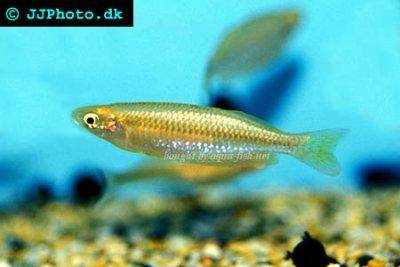

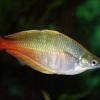 Bleher’s
Bleher’s 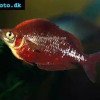 Red
Red 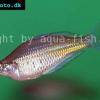 Ramu
Ramu 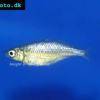 Wanam
Wanam 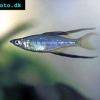 Threadfin
Threadfin 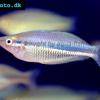 New
New 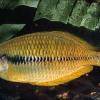 Yakati
Yakati 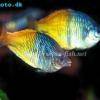 Boesemani
Boesemani 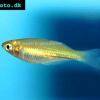 Crimson
Crimson 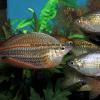 Australian
Australian 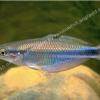 Goldie
Goldie 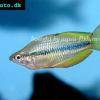 Lake
Lake 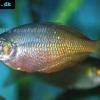 Irian
Irian 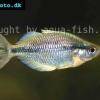 Kamaka
Kamaka 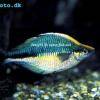 Lake
Lake 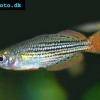 Dwarf
Dwarf 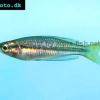 Black
Black 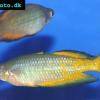 Parkinsoni
Parkinsoni 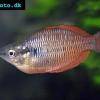 Sunset
Sunset 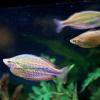 Neon
Neon 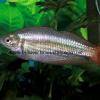 Western
Western 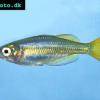 Inornate
Inornate 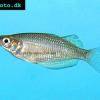 Ruby
Ruby 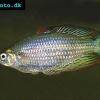 Eastern
Eastern 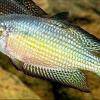 Desert
Desert 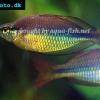 Regal
Regal